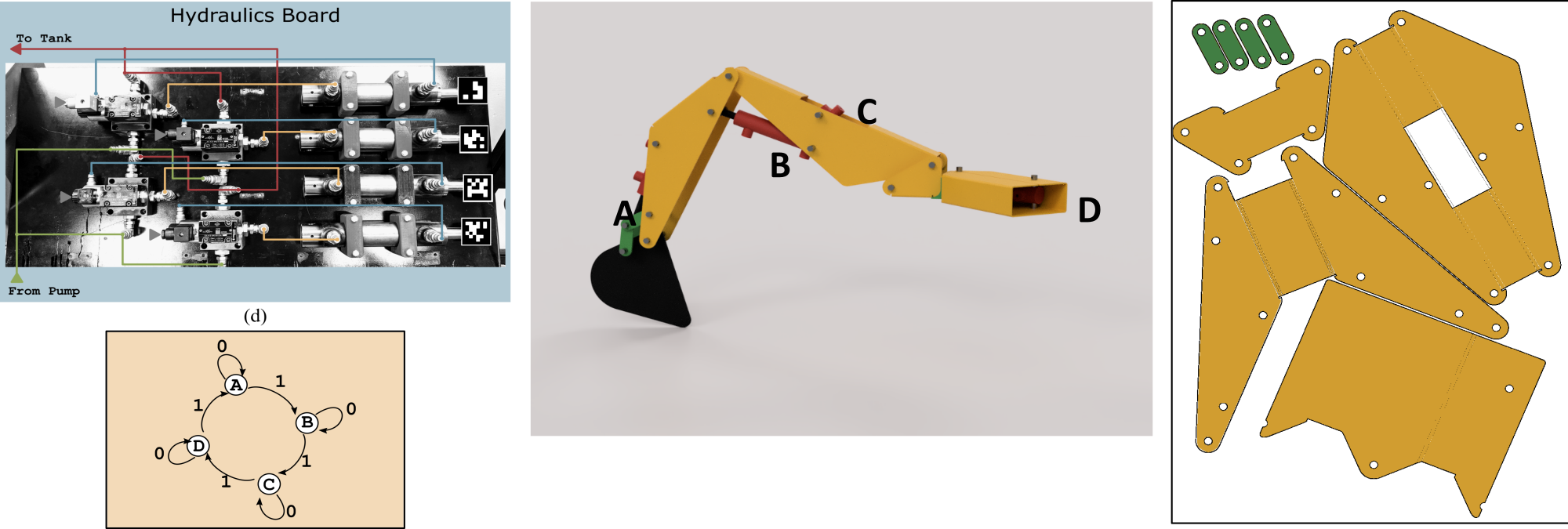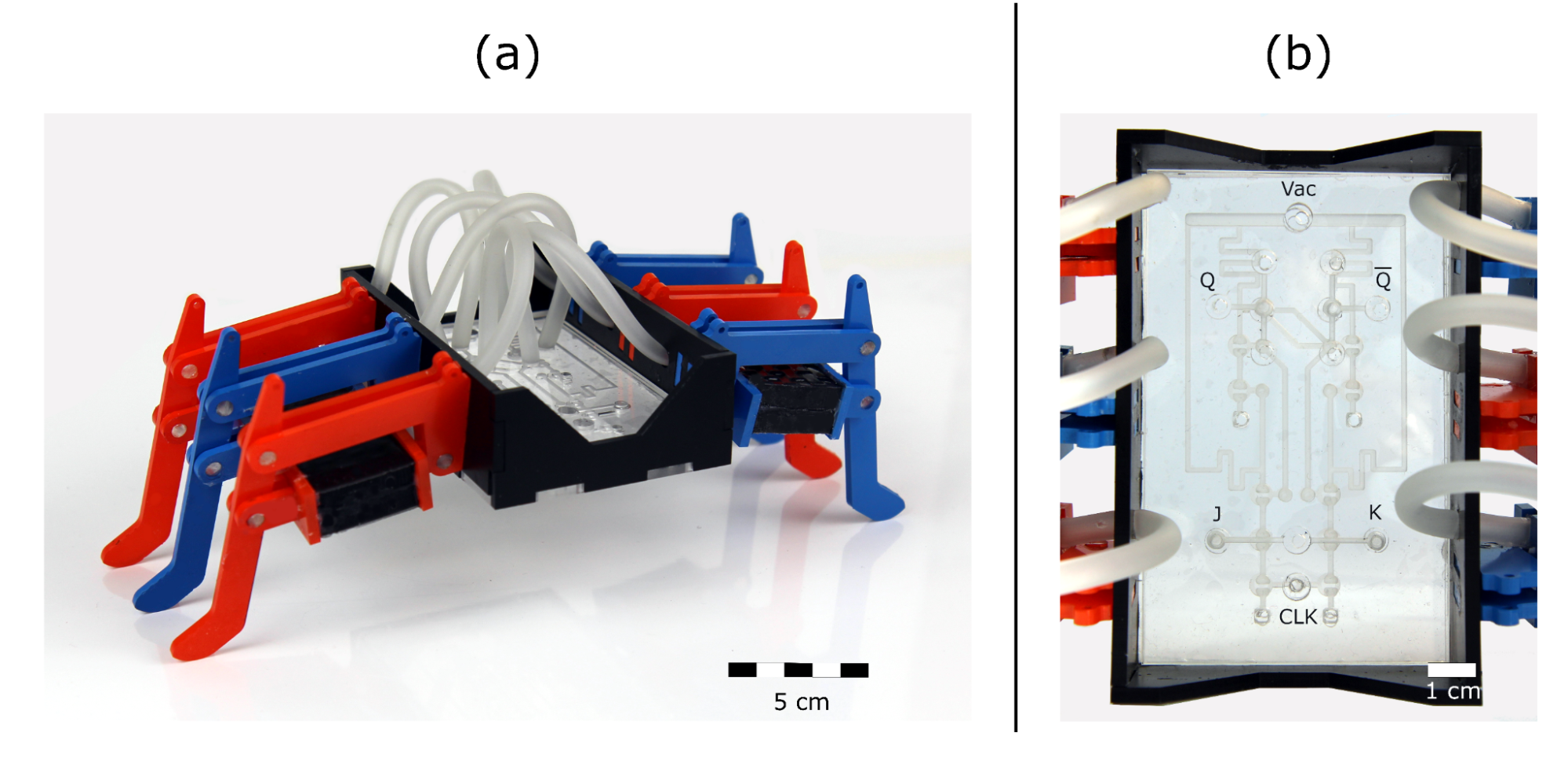Portfolio
Fluidic Logic
Enabling Smart Fluidic Machines
Oct 2020 – Mar 2021
Brief
Fluidic Logic Ltd. is a startup that advances fluidic solutions through innovative design and manufacturing processes. The technology enables rapid manufacture-ready designs for fluidic machines: microfluidics for biotechnology, soft robotics for wearable technologies, and hydraulic control systems for industrial robotics. The company has received support from The University of Edinburgh, mainly through the NxNw ICURe programme, and has leveraged technology from the InnovateUK Connect-R project.

Methods
Based on my postgraduate work, I designed fluidic modules on Fusion 360 and OpenSCAD and lab-tested extensively for functionality. I optimised manufacturing processes for scalability with CNC machining, silicone moulding, and vector stencilling. The prioritisation for every design endeavour was functionality, cost-effectiveness, and mass production suitability.
Results
I developed proprietary IP cores to form a comprehensive design library for fluidic systems. Novel architectures allowed for the customisation of fluidic solutions to meet unique requirements. I pioneered Full-Stack Fluidic Design Automation Tools covering the entire design spectrum. In 2020, Fluidic Logic was awarded Innovate UK ICURe funding and formed as a spin-out startup of the University of Edinburgh.
Connect-R
Industrial-Scale Self Building Modular Robotic Solutions
Jun 2019 – Oct 2020
Brief
The Connect-R project aimed to execute sophisticated tasks, such as building structures and deploying tools for inspection, lifting, and cutting, in hazardous environments like nuclear decommissioning, oil and gas mining, and space. In these environments, there is a significant risk to the health and safety of manual workers. As part of the Innovate UK Grand Challenges for Robotics in Extreme Environments, the Connect-R team developed an industrial-scale, self-building, and modular robotic solution to access work sites in these hazardous environments.
Challenge 1:
Develop a systems interface based on the Robotic Operating System (ROS).

Methods
First, I controlled a simple task using addressing and communication. ROS handled the communications for a hydraulic robot through a Programmable Logic Controller. Then, I moved from the test bench to a prototype system and outlined the system’s requirements.

In this ROS/PLC prototype, the four actuators represent a robotic system. The prototype was Designed For Manufacture using off-the-shelf hydraulic components, standard steel rods, and 2.5 mm of steel Sheet-Metal plasma cut and bent into place for minimal machining.
Results
We ran simulations in our test environment and documented all the work, which was ultimately published in the peer-reviewed journal Advanced Intelligent Systems. Much of the manufacture came to a halt during the COVID-19 pandemic. Still, the team delivered a working prototype of the Connect-R Super Structure Moving Scaffolding using the ROS interface to Innovate UK to complete the project.
Challenge 2:
Design and prototype a new control system for large-scale hydraulic machines using an experimental electronic-free scheme.
Electronic systems and components fail in extreme conditions like nuclear, space, and deep sea. These components must be heavily protected against the ionising effects of radiation exposure or the crushing pressure on the ocean depths. My solution was to remove the electronic components and replace them with a robust fluid-based circuit design.

Methods
I demonstrated digital operations similar to those in electronics in hydraulics, such as binary operations to make a latch–a single-bit storage element for volatile memory. I designed a circuit to remove the need for each hydraulic actuator to have a separate control line: m actuators, log2(m) select lines (e.g. 64 actuators can be controlled with eight lines). I built a demo system system using off-the-shelf components. I designed and manufactured a small-scale prototype spool-valve using Rapid Prototyping methods.
Results
The prototypes and inventions for a fluidic-based control system for hydraulic robots were patented in 2021. The spin-out Fluidic Logic was established out of Edinburgh Innovation, the Technology Transfer Office of the University of Edinburgh.
Soft Robotics for Extreme Environments
Removing Electronic Control
Sep 2018 – Apr 2019
Brief
I participated in the 2019 IEEE International Conference on Soft Robotics in Seoul, South Korea, showcasing pneumatic circuits for robots as part of my postgraduate work.

Methods
Pneumatic circuits are like electronic circuits with pressure as voltage and flow rate as current. Sidewall friction, channel dimensions, and circuit geometry determine the hydraulic resistance. I designed test structures and a fluidic transistor, then progressed to logic gates, sequential logic, and memory elements. I manufactured these circuits using Rapid Prototyping techniques such as laser cutting, 3D Printing, Silicone Moulding, and I collected data with pressure sensors, Arduino, and timing circuits. The data were analysed using Python in Panda.
Results
I showed that we can design pneumatic circuits like electronic circuits in soft robotics. I was invited to present my work at the IEEE International Conference on Soft Robotics 2019. I was awarded the Winner of the Most Outstanding Student Paper award. The conference paper has been cited dozens of times as the most highly cited presentation paper of the conference.
Origami Furniture Design
Red Oak Zen Lotus Chair
Dec 2021 – Feb 2022
Brief
I collaborated with Lane Allen, AIA, LEED AP, BD&C, on the CAD and CAE aspects of his unique Origami furniture designs, mainly focusing on “folding” wood.

Methods
Lane Allen’s Zen-Lotus chair project involved drafting a unique folded chair from a single piece of 4’x8’x ½” plywood cut into three pieces and assembled into its 3D form. The project required expertise in CAD and CAE to bring Lane’s vision to life. I utilised Fusion 360 for 3D drafting of Origami chair designs. I worked closely with Lane Allen to understand the metamorphic process exhibited in Origami. I ensured the CAD designs accurately represented Lane’s vision before the orthogonal drafting phase.
Results
I applied CAD expertise to translate Origami concepts into tangible, permanent chair forms. I worked alongside Lane Allen’s team, including CNC experts and shop rebuild specialists. The Zen-Lotus chair is available to custom order through Allen’s website.